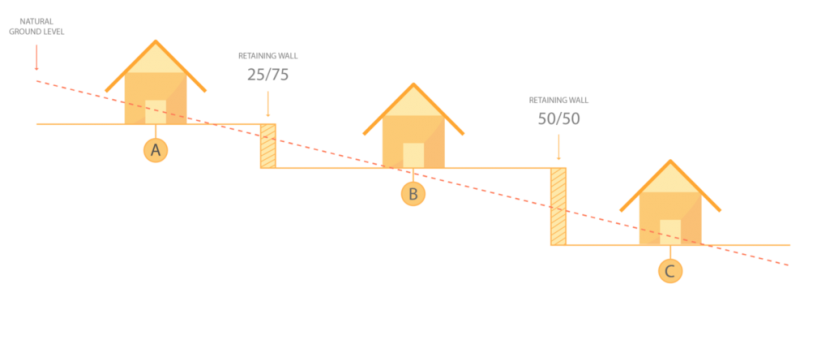-
Retaining Walls Melbourne also have played a significant part in protecting our country from intruders, natural disasters and flood-prone areas. Their principal function is to avoid erosion and flooding of land. But their primary purpose is to also beautify a landscape. Since they are usually constructed inside the perimeter of a residential area or other commercially assembled area, homeowners typically do not believe them when choosing a design for their property. That is unfortunate since the appropriate selection of a retaining wall can create a massive effect on the aesthetic value of your landscape.
Retaining Walls Responsibility
Landscaping the exterior of your house ought to be considered with all elements of good design in your mind. Retaining walls do play an important role in this process. Picking the proper style and materials will help to improve the beauty of your landscaping stuff can help to reduce the maintenance required. The objective of this article is to provide some tips for choosing the right materials for the retaining walls.
Retaining Walls Responsibility
There are numerous common options available when considering the design of retaining walls. Concrete is absolutely among the most popular styles for keeping walls. The process of constructing this kind of retaining wall starts with picking the right location. This starts with an analysis of the site’s topography, soil drainage, water availability and other important site-specific factors. All these elements are important in helping to ascertain the style of a retaining wall that will work best for you.
Retaining Walls Responsibility
Another important aspect of choosing the ideal stuff is colour. The colour of a retaining wall can actually make a difference in how well it works. The color is especially effective in reducing water evaporation and seepage. While the use of colour may seem somewhat odd to homeowners that are used to the classic white or concrete finishes, these endings have been demonstrated to be highly effective. If you are interested in a more natural end, however, choose a colour that will blend in with the environment.
Retaining Walls Responsibility
A third consideration is the permeability of this material. Since water will vanish, low permeability materials would allow water to escape easily. Additionally, these porous surfaces may also attract and trap dirt and debris. It’s important to select materials that are resistant to both rotting, as well as deterring pests from gaining entry to the wall. This may be accomplished through a thorough application of protective coatings or sealants, or by using materials that aren’t permeable.
As a final factor, it’s important to consider the stability of the construction. Generally, the more powerful the construction, the less likely it’s to fracture, particularly if it’s framed with a mortise and tenon screws. Determine whether your walls require upkeep and if so, which type. Furthermore, consider whether any underground components, such as gasoline, could be problematic, especially if the wall is constructed of concrete slabs.
When it comes to the appearance of retaining walls, a great deal of the decision relies upon aesthetics. The general appearance is often determined by the total amount of space available for your structure, as well as the aesthetics surrounding the location. It’s necessary to select the ideal colour and finish to improve the region, in addition, to decrease the visual disturbances which will be made by the walls as soon as they’ve been installed.
If it concerns the responsibilities of retaining walls, contractors are often the most qualified and experienced workers to finish the undertaking. Oftentimes they will also be able to provide references to give you a good idea of what they have done in the past. Before hiring a professional, you should take some time to learn as much as possible about their expertise and the numerous options available to you, as well as how they stack up against one another.


